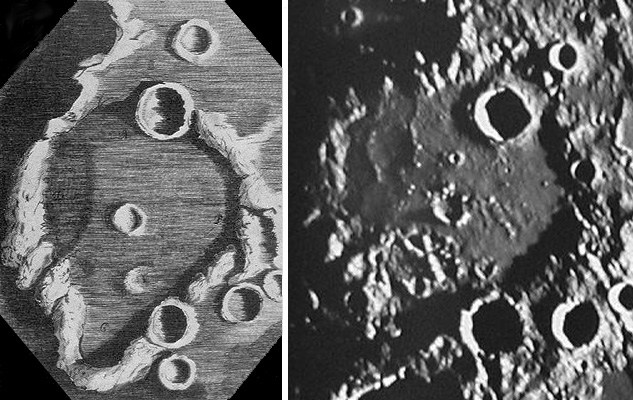The earliest drawings of the Moon were of the entire body. By 1665 Robert Hooke, the English rival of Isaac Newton, published (in his Micrographia) the first drawing of a single feature, and it was remarkably accurate. The comparison of Hooke's drawing of the 150 km wide crater Hipparchus with a modern photo taken with a 61" telescope (Consolidated Lunar Atlas sheet E10) shows that Hooke correctly drew many details including two mountainous ridges at the bottom left. Hooke also shows a shadowed arc on the left side of Hipparchus that represents part of a ghost crater and various small hills. Hooke make this drawing with a 30 ft focal length telescope but he never gave the diameter of its lens. He was a very keen-sighted observer, discovering that Jupiter rotates and discovering Syrtis Major on Mars. Hooke was one of the most versatile scientists of the 17th century - I eagerly await the new biography of him by the wonderful author Lisa Jardine.
Related Links:
Consolidated Lunar Atlas
image
Ingenious Pursuits by Lisa Jardine, p 63-65, Doubleday, New York, 1999.
England's Leonardo - Robert
Hooke
|
Yanvar' Fevral' Mart Aprel' Mai Iyun' Iyul' Avgust Sentyabr' Oktyabr' Noyabr' Dekabr' |
|
Publikacii s klyuchevymi slovami:
Moon - Luna - Lunar Photo of the Day - LPOD
Publikacii so slovami: Moon - Luna - Lunar Photo of the Day - LPOD | |
Sm. takzhe:
Vse publikacii na tu zhe temu >> | |
